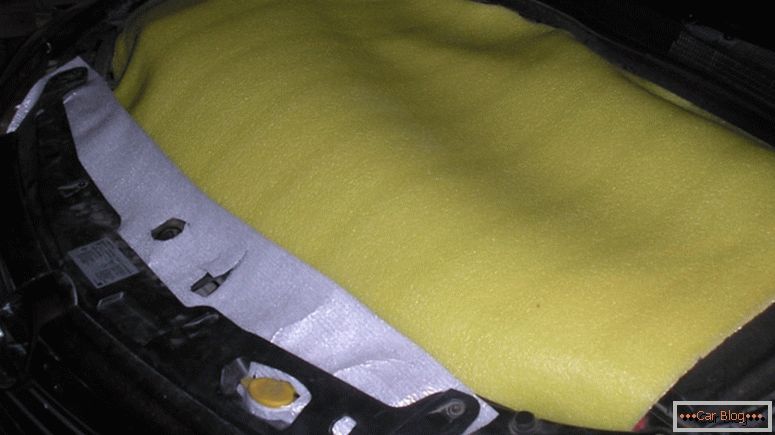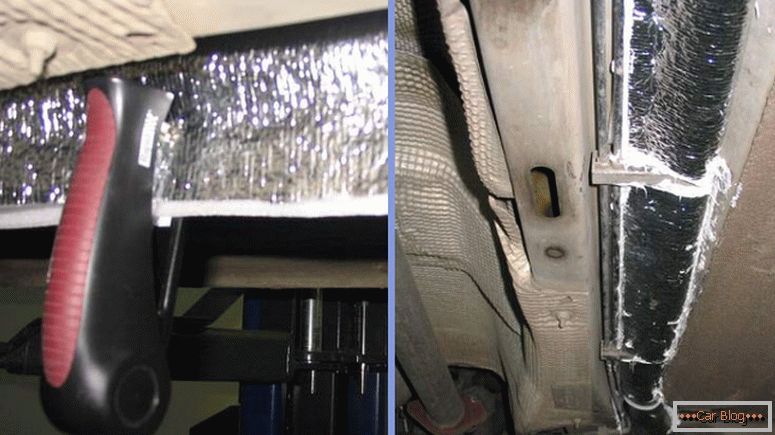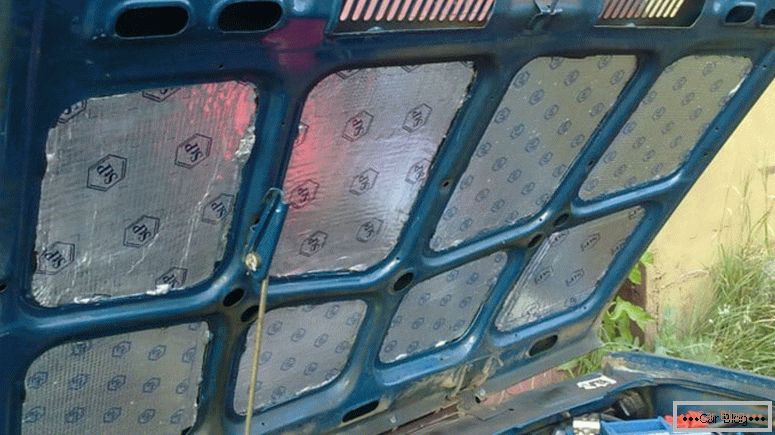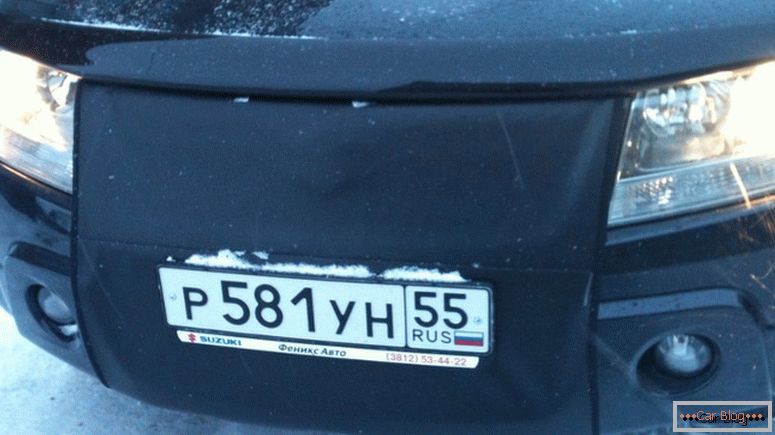Winter is a time of year that doesn’t have a good effect on your car’s well-being. Sometimes it is very difficult to start the car after idle in the cold. Difficult engine starting due to several reasons. Among them, an increase in oil viscosity and loss of battery capacity. And if it turned out to start the engine, then it will be very difficult to warm it up to operating temperature. Therefore, it is necessary to insulate the engine in order to maintain the desired temperature under the hood and to normalize the operation of the engine. In addition, you will also be more comfortable, since the temperature of the air supplied to the salon directly depends on how much the coolant is heated. The most effective is the manual warming of the engine, which you can carry out before the onset of cold weather on your own. How to insulate the engine for the winter and make it work well is the topic of this article.
Content
- 1 Reasons for the need for manual insulation
- 2 The benefits of insulation
- 3 Thermal insulation of a diesel engine
- 4 Warming gasoline engine
- 5 Carrying out additional insulation
Reasons for the need for manual insulation

The easiest, cheapest, fast, but not very effective way of warming
You should not hope for sets for warming, which today in any store a lot. Some ingenuously believe in a well-placed ad, but after a while they are completely disappointed in such accessories. Manufacturers of these attributes promise that you will save up to 20% of gasoline. They probably mean exactly the fuel required to warm up the engine to operating temperature. Of course, for a set you will give a round sum. And after a short period of time you will realize that all the advantages described in the advertisement are greatly exaggerated. And you have to roll up your sleeves to perform the insulation yourself.
Usually the set for warming is some pieces of special material. It is glued to the inside of the hood to reflect the heat coming from the engine. Sometimes you can find covers for radiators. Immediately I recall the cartons that some motorists install to shield the radiator combs from the cold oncoming air. Oddly enough, but the effect of the cardboard, though small, but still noticeable. And the most important negative quality of the kits is their focus on the temperature regimes of a milder climate. The manufacturer is usually from Europe, which means that the minimum temperature will be about 10 degrees below zero. But in Russia, temperatures are even lower, even in the warmest southern regions. Therefore, not always able to save kit insulation.
The benefits of insulation

With small frosts, even a simple engine cover with insulation can help.
If you do not carry out the insulation of the motor - get a longer warming up to the operating temperature. The consequence of this is premature wear of mechanisms. In the background, there is an overrun of fuel, which is not very cheap these days. And if the ice cover is constantly on the hood, then sooner or later the lacquer layer (at best) will start to deform and you will have to restore the old look. In other words, after winter, the car will still have one.
See also: How to change the alternator belt on your ownThe first reason that the engine starts badly is thick oil. At low temperatures, it thickens much, its consistency becomes more like jelly than a lubricant. The consequence is that it takes a lot of time for the lubricant to assume its original state and reach all the mechanisms of the engine. This means that for some time the motor will run dry, the amount of lubricant will be minimal. And any internal combustion engine is a mechanism where friction occurs in almost all nodes.
Also affects the quality of the launch and the composition of the air-fuel mixture. Gasoline or diesel fuel evaporates much worse, due to which mixing with air occurs disproportionately. Unstable engine operation until warm-up is provided. With severe frosts, the battery capacity is also reduced. Depending on the temperature, it can be halved. And all these factors, acting simultaneously, lead to the fact that the engine is very difficult to start in the cold.
Thermal insulation of a diesel engine
Diesel - it is profitable, but in the winter to use it is extremely difficult. In order not to get involved in expensive repairs of the high-pressure fuel pump and filter, you need to refuel with fuel that does not thicken at negative temperatures. If it is not possible to pour such diesel fuel into the tank, then it is very necessary to find additives that counteract the frost. Even if you make the engine warming for the winter, still fill up with diesel fuel, which is suitable for use at low temperatures.
To insulate a diesel engine, you need a small set of tools:
- Sharp scissors.
- Stapler.
- Corrugated polyethylene.
- Tool for working with silicone.

Warming of the diesel engine fuel line
The first step is to cover the entire engine. But if the frosts are very strong, then the effect of such an action will be little. To carry out a full range of measures for motor weatherization, you will need to install the car on a ramp or viewing pit. The fuel line (together with the return) must be carefully treated with thermal insulation material. Use corrugated polyethylene to make the insulation. Moreover, its thickness should be at least half a centimeter.
The most important thing is not to be mistaken with the size. First, measure the diameter of the tube, then cut the required length and width of the piece of insulating material. Properly wrap the entire tube with the material and fix it with a stapler. Edge process sealant to the air does not fall under the insulation. Small gaps under the hood can be sealed with the same corrugated polyethylene. It copes well with the insulation of the cooling system radiator.
See also: How to replace the engine mountTo do this, unscrew the radiator mounting bolts and take measurements - height and width. Cut a piece of insulation, fold it in half and install so that the lower part was pressed down by the radiator body and the upper part was bolted. He is not going anywhere, and will fulfill the task assigned to him with success. Similarly, it is possible to conduct insulation of the fuel rail, thermostat, cooling system pipes. But this is true at temperatures of -30 and below.
Warming gasoline engine

If the hood does not have factory insulation, you should definitely do it yourself.
No matter the gasoline or diesel engine on your car. It is still necessary to carefully insulate before winter. There is only a small nuance - gasoline in the fuel line does not thicken, which already makes your life easier in the cold season. Thermal insulation of the radiator (even with a carton) greatly improves engine warming up. But the cardboard is not very aesthetic, and there is no effectiveness in severe frosts. Therefore, it is better to use covers made of leatherette. Moreover, their internal cavity should be treated with insulating material. If you wish, you can make a similar case for your radiator yourself. Unless, of course, you are not afraid to spend the evening - another in the company of a sewing machine.
Some heaters have a very useful feature - their composition is such that when a certain temperature is reached, they begin to conduct heat, thereby maintaining the necessary heat balance. So you do not risk getting overheated motor.
The inside of the hood also does not hurt to handle mineral wool or foil polypropylene. But this is true for owners of old cars, most of the new has a similar insulation from the factory. Having made such coverage, you will get a cold hood, but the working temperature will remain under it.
Carrying out additional warming

For more effective thermal insulation of the car radiator, it is better to use special covers.
But if what is described above is not enough, it is necessary to make an additional treatment with heat-insulating materials. To do this, remove the crankcase protection, if any. Wash it thoroughly, wipe it with a solvent or alcohol. The main thing - to achieve a clean surface. Then cut the insulation in the form of protection with a margin in all directions of 1 - 2 centimeters. Apply an adhesive to the inside of the protection and fix the insulation on it with it. Do all this as carefully as possible.
To improve engine oil warming up, you need to thoroughly wash the oil pan outside and degrease it. After apply the glue and a layer of insulating material. Of course, the glue should choose one that can withstand high temperatures. But the warming of a car engine with their own hands does not end there. Similarly, you can glue the inside of the engine compartment and the fire wall (the one between the cabin and the engine). Also, you can separately wrap the thermostat with connections, paste over the expansion tank and pipes leading to the stove. The main thing is to ensure maximum tightness of the engine compartment, but not to overdo it. Try not to shut off the air supply to the fuel system.



